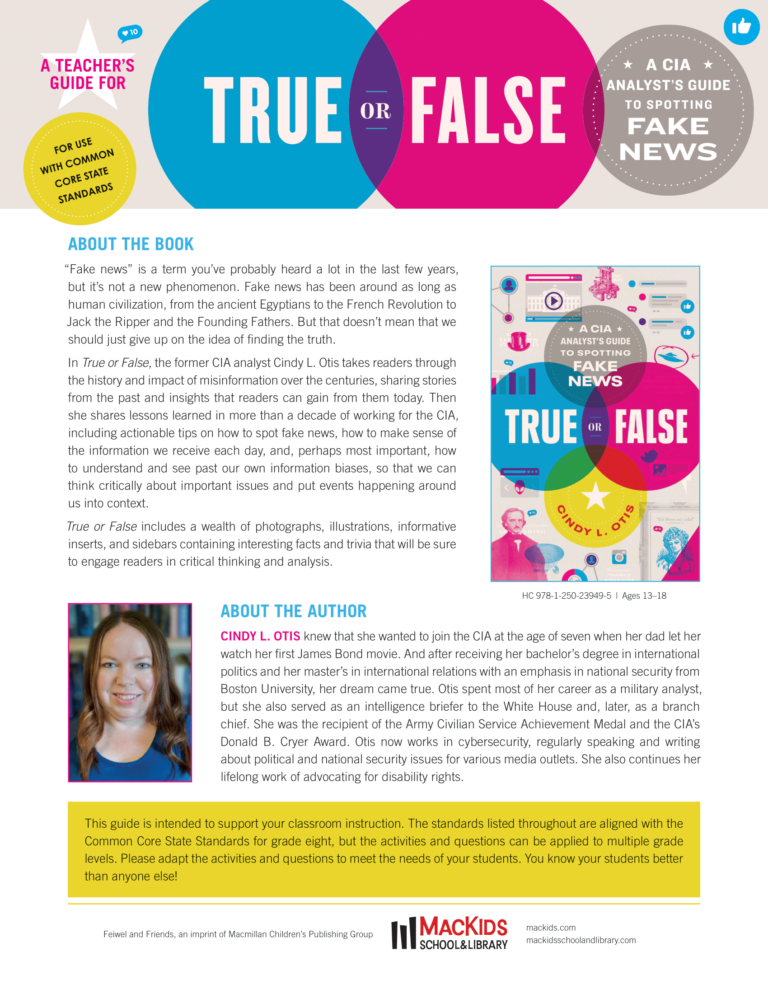Miscellaneous
TedEd Lesson: Why People Fall for Misinformation—Joseph Isaac Written by: Cindy L. OtisDescription: In 1901, David Hänig published research that led to what we...
Infographic: Beyond Fake News—10 Types of Misleading News By EAVI Description: The Beyond Fake News infographic identifies the 10 types of potentially...
Information Literacy Toolkit By Jennifer LaGarde and Darren Hudgins Description: Toolkit provides the highest quality professional support from Jennifer LaGarde...
Fighting Fake News: Tools and Strategies for Teaching Media Literacy (June 2019) Written by: Jennifer LaGarde and Darren...
A Teacher’s Guide to True or False: A CIA Analyst’s Guide to Fake News Written by: Cindy L. OtisDescription: Intended to support classroom instruction; provides...





